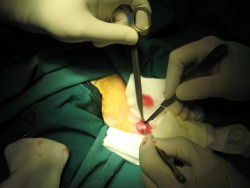▼ Reference
- Holderegger C, Schmidlin P R, Weber F E, Mohn D. Preclinical in vivo Performance of Novel Biodegradable, Electrospun Poly(lactic acid) and Poly(lactic-co-glycolic acid) Nanocomposites: A Review. Materials 2015; 8: 4912.
- Karuppannan C, Sivaraj M, Kumar J G, Seerangan R, Balasubramanian S, Gopal D R. Fabrication of Progesterone-Loaded Nanofibers for the Drug Delivery Applications in Bovine. Nanoscale Research Letters 2017; 12:116 Open Access
- MacKintosh S B, Serino L P, Iddon P D, Brown R, Conlan R S, Wright C J, Maffeis T G G, Raxworthy M J, Sheldon I M. A three-dimensional model of primary bovine endometrium using an electrospun scaffold. Biofabrication 2015; 7: 025010.
- Souza M A, Sakamoto K Y, Mattoso L H C. Release of the Diclofenac Sodium by Nanofibers of Poly(3-hydroxybutyrate-co-3-hydroxyvalerate) Obtained from Electrospinning and Solution Blow Spinning. Journal of Nanomaterials 2014; 2014: 129035. Open Access.
- Wu T, Jiang B, Wang Y, Yin A, Huang C, Wang S, Mo X. Electrospun poly(L-lactide-co-caprolactone)-collagen-chitosan vascular graft in a canine femoral artery model. Journal of Materials Chemistry B 2015; 3: 5760.
▼ Credit and Acknowledgement
Author
Wee-Eong TEO View profile
Email: weeeong@yahoo.com
 ElectrospinTech
ElectrospinTech
